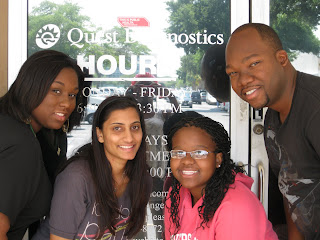
Who’s in your clothes?
Love shopping? Most of us want the finer things in life. Whether it’s shopping at the finest stores in the U.S. or even at Goodwill, your health is at risk. Clothes are not as new and fresh as people think. According to Ministry Health Care, Dr. Philip Tierno, director of microbiology and immunology at New York University conducted a test on 14 articles of clothing. Dr. Tierno found respiratory secretions, skin flora, fecal flora, vaginal organisms, and yeast on the garments. Bacteria can live up to months! Scary Right?
Our group chose Ross as our “this is public health” location because people are not aware of the bacteria and infections that can be transmitted from trying on clothes, hats, shoes and other various items from department stores.For example, trying on shoes without a protective barrier can cause a person to contract a fungal infection (athletes foot). What about the spread of yeast infections? Yeast infections are not contagious; however, it can enter the body and turn into its infectious form.Also, by trying on an undergarment (i.e. bathing suite bottoms) after an individual who has scabies or pubic lice, could possibly harm the next person.
Shopping is a public health issue because it deals with our community in an enormous way for the reason that everyone shops.Think about it, not everyone has good hygiene. It is so easy for an individual to walk into a department store and try on clothes. By addressing this issue we can bring awareness to the community and encourage safer shopping. By doing so, there may be a decrease in the number of bacterial infections that people contract. To further aid in decreasing the transmission of bacteria, here are some helpful tips: before trying on a shoe, put on socks that department store offers. When trying on an undergarment, try it on over your clothing. This goes for all types of clothing and other accessories. Lastly, wash what you buy! They are not always safe; protect your home, children, and most of all yourself. So the question remains, what are you taking home?
For more information go to http://ministryhealth.org/HC/Home/Fall2010/Thehiddenhazardsofshopping.nws and read about the Hidden Hazards of Shopping.
By: Jennifer Andre, Gilbertte Berthier, Lorry Beauvais








